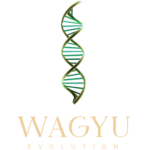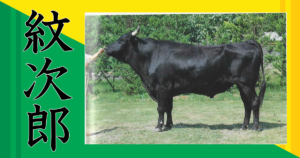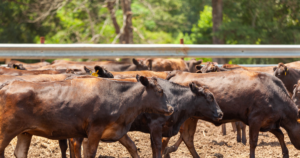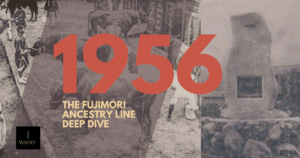The Science of Marbling in Wagyu
Table of Contents
Intramuscular fat, or IMF, is the fat that can be seen between different muscle fibers in the same cut. Marbling is when you can see white dots or lines of IMF between the muscle bundles. One of the most important things that affects the taste and quality of beef is the amount of IMF that is in it, especially in skeletal muscle cells like which are priced cuts for steaks. There is a link between the marbling and the perceived qualities of meat, such as its color, softness, and taste. Understanding the intricate factors influencing marbling, from genetic predispositions to hormonal regulation, gender, herd management , and cellular processes culminate in this unique characteristic which is prized in Wagyu.
Genetics
The distinctive genetic composition of Wagyu beef is primarily responsible for the presence of marbling. Over the course of centuries, Wagyu cattle have undergone selective breeding to develop exceptional marbling characteristics. These bovines exhibit a genetic inclination to generate a substantial quantity of intramuscular fat (IMF), which is accountable for the formation of marbling. Even among Wagyu breeds that are 100% full-blood, there is significant diversity in the level of marbling, suggesting that individual sires play a significant role.
Gender
Gender exerts a significant influence on the intramuscular fat (IMF) content within cattle skeletal muscles. Typically, when considering factors like breed, age, and time on feed at a similar slaughter weight, bulls tend to exhibit lower IMF contents compared to heifers. Additionally, studies have shown that gender affects not only IMF content but also fatty acid profile and physicochemical properties of meat, as evidenced in Qinchuan cattle These findings suggest a correlation between sex hormones and the development of intramuscular adipocytes in cattle.
Testosterone and dihydrotestosterone, for instance, regulate lineage determination in mesenchymal stem cells by favoring myogenic commitment over adipogenic differentiation. Conversely, 17β-estradiol and progesterone promote adipogenesis by increasing glycerol-3-phosphate dehydrogenase (GPDH) activity and reducing lipoprotein lipase (LPL) expression. Moreover, these hormones influence adipokine secretion and energy metabolism pathways, impacting fat deposition.
Nutrition
Nutrition plays a crucial role in the development, health, and quality of beef cattle. Providing balanced and appropriate nutrition throughout all stages of life, from conception to slaughter, is essential for maximizing production efficiency and ensuring high-quality beef. Adequate levels of protein, energy, vitamins, and minerals are necessary to support growth, muscle development, and overall well-being.
Proper nutrition during gestation can influence fetal programming, affecting traits such as marbling and tenderness in the offspring. Additionally, optimizing diet composition, such as adjusting concentrate to roughage ratios, can impact fat deposition and meat quality. Moreover, the supplementation of specific nutrients, like vitamin A or vitamin C, can further enhance marbling and improve the overall nutritional profile of beef. Therefore, implementing a optimized feeding program can greatly benefit your herds.
Herd Management
Management factors play a critical role in shaping the quality and efficiency of beef production. Practices such as castration, age at weaning, and age and weight at slaughter significantly impact the development and characteristics of beef cattle. Castration, for instance, can influence fat deposition and meat quality, with various methods and timing affecting outcomes differently. Similarly, age at weaning can affect marbling levels, with early weaning combined with appropriate diet promoting better fat deposition. Furthermore, decisions regarding the age and weight at slaughter are crucial, as they determine the maturity of the animal and its potential for marbling development.
Hormonal Regulation
The involvement of hormones in the development of marbling in Wagyu cattle is of considerable importance. Numerous studies have demonstrated that the levels of hormones, including insulin, cortisol, triiodothyronine (T3), and thyroxine (T4), have the potential to exert an impact on the process of marbling. For example, Wagyu cattle that are reared in an environment characterized by low levels of stress exhibit a reduced production of stress hormones, hence contributing to the enhancement of meat taste and softness. Furthermore, animals with greater marbling had elevated average levels of T3 and T4, indicating that thyroid hormones could promote marbling in cattle.
Adipogenesis
The process of adipogenesis, which involves the production of fat cells, is a significant contributing component in the development of marbling. Wagyu cattle exhibit a higher abundance of adipogenic progenitor cells, hence enhancing the intramuscular adipogenesis process in terms of both capacity and efficiency. As a consequence, there is an increased proportion of IMF, which imparts the meat with its distinctive buttery consistency and robust taste.
Intramuscular adipogenesis, commonly referred to as adipose invasion of muscle, plays a pivotal role in the formation of marbling observed in Wagyu beef1. The aforementioned process entails the development of adipocytes inside the muscular tissue, hence contributing to the distinctive marbling pattern.
Wagyu cattle have increased levels of both intramuscular fat (IMF) and collagen, as well as a higher presence of adipogenic cells in their muscles. This suggests that intramuscular adipogenesis is more pronounced in Wagyu muscle compared to Angus muscle. The observed phenomenon can be attributed to the higher abundance of adipogenic progenitor cells in Wagyu cattle, resulting in enhanced intramuscular adipogenesis capability and efficiency.
In addition, Wagyu cattle possess greater muscle fiber diameters compared to Angus cattle, perhaps allowing for more adipose tissue infiltration. Wagyu cattle possess a distinctive characteristic in their adipose tissue, which exhibits a greater level of macrophage infiltration in comparison to other breeds.
Furthermore, the intercommunication of endothelial cells, muscle cells, and fibro/adipogenic progenitor (FAP) cells is of paramount importance in the process of adipose invasion. The communication involves pathways that govern adipogenesis and fibrogenesis, including PDGF, FGF, and IGF signaling.
Wagyu cattle have increased levels of both intramuscular fat (IMF) and collagen, as well as a higher presence of adipogenic cells in their muscles. This suggests that intramuscular adipogenesis is more pronounced in Wagyu muscle compared to Angus muscle. The observed phenomenon can be attributed to the higher abundance of adipogenic progenitor cells Figure 1 in Wagyu cattle, resulting in enhanced intramuscular adipogenesis capability and efficiency.

Fig. 4. Distribution of adipocytes in highly marbled Longissimus dorsi. Histological section of Longissimus dorsi showing the presence of some apparently individual adipocytes.
In addition, Wagyu cattle possess greater muscle fiber diameters compared to Angus cattle, perhaps allowing for more adipose tissue infiltration. Wagyu cattle possess a distinctive characteristic in their adipose tissue, which exhibits a greater level of macrophage infiltration in comparison to other breeds.
Furthermore, the intercommunication of endothelial cells, muscle cells, and fibro/adipogenic progenitor (FAP) cells is of paramount importance in the process of adipose invasion. The communication involves pathways that govern adipogenesis and fibrogenesis, including PDGF, FGF, and IGF signaling.
Conclusion
In conclusion, the exceptional marbling that defines Wagyu beef is a result of a remarkable interplay between genetics, hormones, and cellular processes. Wagyu cattle are bred to have a natural tendency for high intramuscular fat (IMF), the very component that creates the marbling effect. Furthermore, Proper herd management, nutrition, and specific hormone levels promote this fat deposition. Finally, Wagyu’s unique cellular makeup, with an abundance of fat cell precursors and larger muscle fibers, optimizes the formation of marbling, leading to the prized taste and texture of this prized beef.
References
Nguyen, D. V., Nguyen, O. C., & Malau-Aduli, A. E. (2021). Main regulatory factors of marbling level in beef cattle. Veterinary and Animal Science, 14, 100219. https://doi.org/10.1016/j.vas.2021.100219
Nguyen, D. V., Malau-Aduli, B. S., Cavalieri, J., Nichols, P. D., & Malau-Aduli, A. E. (2018a). Supplementation with plant-derived oils rich in omega-3 polyunsaturated fatty acids for lamb production. Veterinary and Animal Science, 6, 29–40. https://doi. org/10.1016/j.vas.2018.08.001.
Valenzuela, J.L.; Lloyd, S.S.; Mastaglia, F.L.; Dawkins, R.L. (2020). Adipose invasion of muscle in Wagyu cattle: Monitoring by histology and melting temperature. Meat Science, (), 108063–. doi:10.1016/j.meatsci.2020.108063
- S. Duarte, P. V. R. Paulino, A. K. Das, S. Wei, N. V. L. Serão, X. Fu, S. M. Harris, M. V. Dodson, M. Du, Enhancement of adipogenesis and fibrogenesis in skeletal muscle of Wagyu compared with Angus cattle, Journal of Animal Science, Volume 91, Issue 6, June 2013, Pages 2938–2946, https://doi.org/10.2527/jas.2012-5892
Y.S. Oh, S.B. Cho, K.H. Baek, C.B. Choi Effects of testosterone, 17β-estradiol, and progesterone on the differentiation of bovine intramuscular adipocytes Asian-Australasian Journal of Animal Sciences, 18 (2005), pp. 1589-1593 https://doi.org/10.5713/ajas.2005.1589
- Singh, J.N. Artaza, W.E. Taylor, N.F. Gonzalez-Cadavid, S. Bhasin Androgens stimulate myogenic differentiation and inhibit adipogenesis in C3H 10T1/2 pluripotent cells through an androgen receptor-mediated pathway Endocrinology, 144 (2003), pp. 5081-5088 https://doi.org/10.1210/en.2003-0741
Yamada, T. (2022). Intramuscular adipogenesis in cattle: Effects of body fat distribution and macrophage infiltration. Animal Science Journal, Early View, 1-11. https://doi.org/10.1111/asj.13785
Top of Form
Wang L., Gao P., Li C., Liu Q., Yao Z., Li Y., et al (2023) A single-cell atlas of bovine skeletal muscle reveals mechanisms regulating intramuscular adipogenesis and fibrogenesis, Journal of Cachexia, Sarcopenia and Muscle, 14, 2152–2167, https://doi.org/10.1002/jcsm.13292
Y.-Y. Zhang, L.S. Zan, H.B. Wang, Y.P. Xin, C.M. Adoligbe, J.A. Ujan Effect of sex on meat quality characteristics of Qinchuan cattle African Journal of Biotechnology, 9 (2010), pp. 4504-4509



